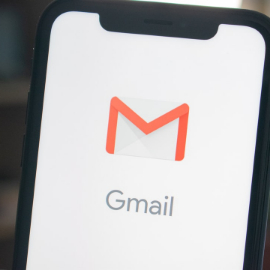Social Media Trends – 2021
Every year, as technology and culture change, social media adapts. Here’s three things that will take the forefront on social media in 2021!
Stories take over….

In the past couple years, one platform after another has adapted a “stories” feature. LinkedIn, Spotify, and Twitter all added stories features in 2020. (Pinterest added one the day this article came out!) Stories allow consumers to see bite sized pieces of content in a way that feels authentic. A lot of marketing automation platforms don’t have stories scheduling built in yet, so it’s a good idea to take some time and plan out your strategy and figure out what way of adding stories to your content will work best for you.

Go Live….
Lives have been popular on just about every platform for years. With the constant increase in content available, have that instant connection with audiences will be even more valuable in 2021.
Purpose driven brands and responsible consumerism….
2020 was defiantly a year for activism and accountability. More and more consumers expect the brands they interact with to uphold their same values. Social Media is the place where you can easily share what your company believes and what you are doing to stand up for your values.
What do you hope to see on social media in 2021?
What’s Working in Marketing- 2020?

Eleven months into 2020, it is safe to say, this year has had a lot of surprises. So, what has working in marketing this year? Here is what we have found:
1) Customer Experience driven marketing. This encompasses a lot of things. The main things that we have found to be successful in 2020 are brand storytelling and personalization.

Our brain is literally wired to seek out and respond to narratives. And no matter what is happening around us, that isn’t going to change. We are going to connect and respond better to brands that tell us a story and bring us along on a journey. How are some companies implementing this strategy? YouTube series, podcasts, active social medias are popular first steps. (Learn more about customer journey’s here.)
Personalization is a big key in reaching your customer’s heart. Using the customer’s name in things like email subject lines is a good first step. Beyond that you can use audience segmentation to separate your audience into groups that share common characteristics like demographics and behavioral information. Using your audience segments to target your message to things that each group are actually invested in can greatly increase how personal your marketing will feel to the customer.
Utilizing Multi and Omni channel marketing strategies will also increase how smooth your brand experience is for your customers. (Learn more about building audiences here and here.)
2) Email. More than 50% of people in the US check their personal email over 10 times a day. Most people say that it is their preferred way to communicate with brands. Although “the end of email” has been threatened may times in recent years, 2020 has shown us that email isn’t going anywhere soon. For many companies, email became the only way they could communicate with their customers this year.

That means the margin for error with sending emails is relatively small. So. don’t forget to preview your email with different providers and devise before your send!
(Here are more email tips and tricks.)
3) Responsible consumerism and business practices. More than ever, consumers are aware of the effect their purchases have on the environment and on society and they want to buy from companies whose values align with theirs. People expect companies to actively fight injustices and be visibility support causes.
What has worked for your marketing this year?
Can You Trust Your Data?

No matter how good the machine you build it is, it’s not going to run well if your fuel is poor quality. Data is the fuel the runs all marketing. The problem is, data error is commonplace. Data providers are all trying to give their clients the best data possible but often the data they are providing doesn’t match up.
Harvard Business Review did a study in May 2020 to test the accuracy of consumer data. They found that the accuracy of Demographic data was particularly disappointing. Most were only around 50% accurate. For example, the average accuracy of gender segments classifying males was only 42.5%.
“Half the money I spend on
– department-store magnate John Wanamaker (1838-1922)
advertising is wasted; the trouble is,
I don’t know which half.”

What do those errors mean for your campaign? A study by Forrester Consulting on behalf of Marketing Evolution in fall 2019 found that “marketers estimate that 21 cents of every media dollar spent by their organization in the last year was wasted due to poor data quality, which translates to a $1.2 million and $16.5 million average annual loss for mid-size and enterprise organizations, respectively.”
How do a few errors on a record level equal so much wasted money? Record level data is the spring from which everything else flows. For a small example, if a few records in your CRM have mistakes in them, what is going to happen when you use them to send an email campaign? The opens and clicks from your email campaign may inform your audience for your social campaign. In every step and trigger along your campaign, the small errors effect more and more information downstream.
The company Truth Set is looking to minimize error across all data. How? By providing a third – party consumer report type service for data providers and marketers. Truth Set goes through every record available and assigns a percentage rating to all the attributes, such as ‘percentage that this record is actually male.’ That way, marketers won’t waste money on inaccurate data and data providers can keep their data clean.

The hope is that as more time goes on, third party quality checks and ratings will become commonplace and shrink margin for error unilaterally.
What can you do make sure your data is accurate? There are a few easy identifiers you can check for. How old is the data? How transparent is the provider with where the data came from? How consistent and relevant is it?
What changes do you think would make it easier for marketers to trust their data?
The End of the Cookie: Part 1

In January google announced that they are going to phase out third party cookies in the next two years. This created quite a buzz but what does it actually mean and what should you do?
Cookies were one of this first major web advertising break throughs, invented in 1994 for Netscape. Using cookies have become integral to most companies online marketing strategies. How do cookies work? There are two types of cookies. First and third-party cookies. Cookies work by creating a bread crumb (or cookie crumb) trail of your activity through a web page. First party cookies only have access to your activity on their website. Third party cookies are not tied to one website and instead track peoples trail through the internet. Marketer use both to figure out their audience and retarget them.
Seeing accept cookie notifications are commonplace. Why? Recent legislation has changed some internet privacy laws that accept cookies. Which is one reason that google is phasing them out. Safari and Firefox already have. Google Chrome however makes up more than 56% of web traffic. Google makes most of its revenue from advertisers. Online advertising was a 57.9-billion-dollar industry in the first half of 2019 and that number is expected to grow exponentially. Google has to be careful not to disrupt that industry to much while adapting to greater privacy demands.
There is not a concrete answer to what is going to fill the cookie void yet. Check out part two of this article to see some of the possibilities for a post cookie world.
